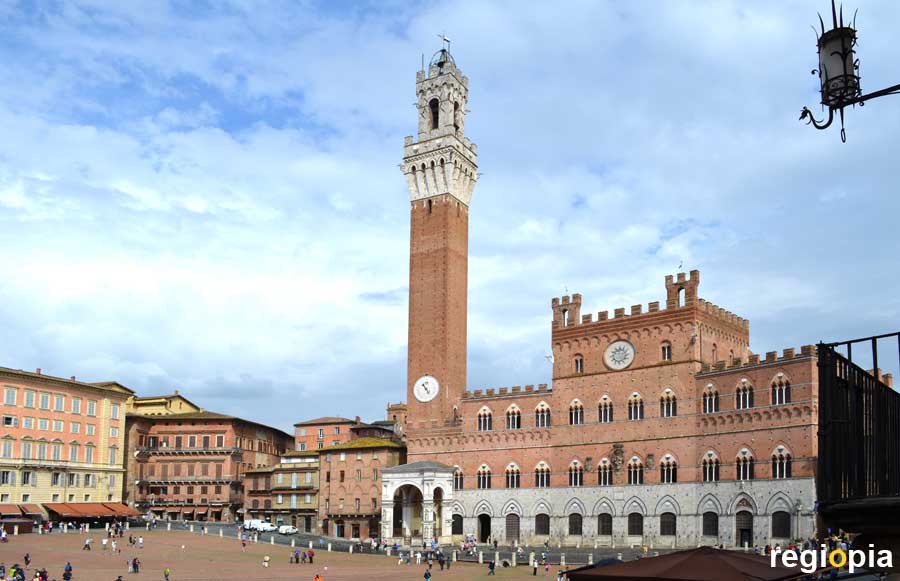
Siena
In the Middle Ages, Siena was Florence's greatest competitor in Tuscany. The beautiful city with around 50,000 inhabitants was declared a UNESCO World Heritage Site in 1995. Siena is world famous for the Palio, a horse race that takes place on the Piazza del Campo. The Palio has been held since 1283 and begins with flag waving in historical costumes, before the districts of Sienna compete against each other. The actual horse race takes barely 2 minutes. The Palio is the largest festival in Tuscany and takes place every year on July 2nd and August 16th.
The Piazza del Campo is the center of the city and is rightly considered one of the most beautiful squares in Italy. The shell-shaped square was paved in 1349, the nine segments represent the Council of the Nine Noveschi. At the lower end of the Piazza del Campo stands the Palazzo Pubblico, the town hall of Siena. The Gothic structure was completed in 1342. The bell tower Torre del Mangia is 102 m high. At the top of the square is the Fonte Gaia. The fountain was built in 1419, but the original figures by Jacopo della Querica are now shown in the Palazzo Publico. The reliefs on the Fonte Gaia are copies from the 19th century.
Another attraction of Siena is the cathedral. The Duomo di Siena was built between 1136 and 1382. The cathedral is actually a Romanesque building made of brick, clad with a Gothic facade. Due to the marble facade made of dark green and white marble, the Cathedral of Siena is one of the most beautiful churches in Italy. The interior is also stunning, with inlaid floors and black and white marble columns. The campanile, also black and white striped, from 1313 stands next to the dome of the cathedral. You should not miss the ornate vaulted ceiling in the Piccolomini library, which you enter from the nave.
The Siena is around 50 kilometers south of Florence.
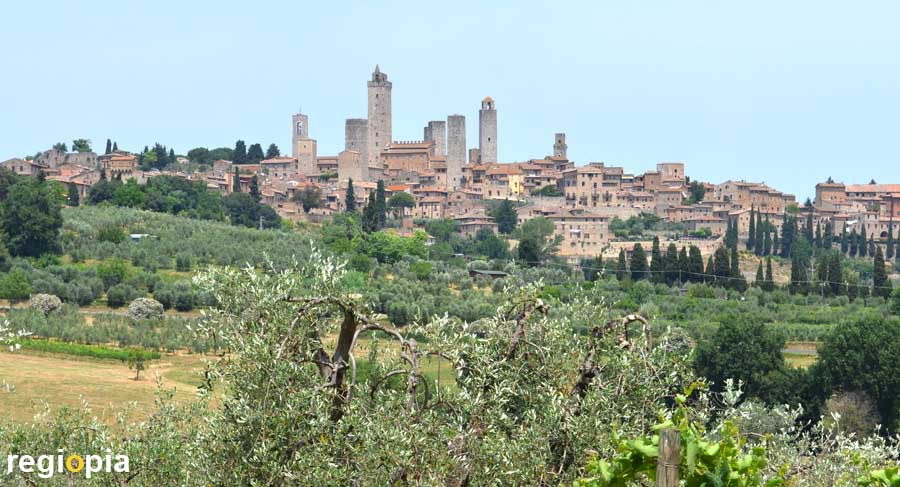
San Gimignano
San Gimignano is often referred to as the Manhattan of the Middle Ages. The city in Tuscany is located on a hill above the fertile plain. San Gimignano gained its wealth through pilgrims who stopped here on their way to Rome. The wealthy families of the city tried to outdo each other with high gender towers. The original defense function became irrelevant over time; it was more about demonstrating power and wealth. Like today with the tallest skyscrapers in the world.
In the Middle Ages, Bologna was the city with the most impressive skyline, there were around 180 gender towers that stretched almost 100 m into the sky. Most of these towers have disappeared in Bologna. The special thing about San Gimignano is that the skyline still looks like it did in the 14th century.
You enter San Gimignano through Porta San Giovanni and follow the street to the Piazza della Cisterna. A small passage at the north end of the square leads to the Piazza del Duomo / Piazza delle Erbe, here are the tallest towers in the city. The Romanesque church Collegiata and the town hall Palazzo del Popolo are located at the Piazza del Duomo.
Piazza Della Cisterna, San Gimignano
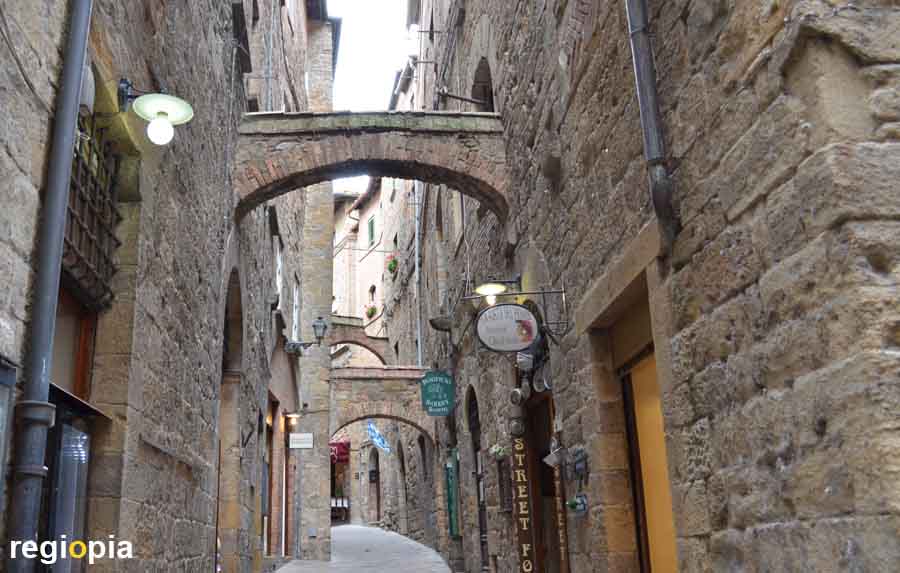
Volterra
Volterra is a city with around 10,000 inhabitants, which was built on a 550 m high hill. The city still looks like it did in the Middle Ages and is therefore often used for filming. The vampires from the Twilight series came from Volterra. The episode "New Moon" is partly set in Volterra, but many scenes were actually shot in Montepulciano.
Volterra arose as early as the 4th century BC as an amalgamation of several Etruscan villages. At this time the first city wall was built, of which the Porta all'Arco is still preserved. At the main square stands the Palazzo dei Priori, which was built around 1250. This is the oldest town hall in Tuscany. The Palazzo Vecchio in Florence was built based on its model. Another attraction of Volterra is the Teatro Romano. The Roman amphitheater was built around the year zero, during the reign of Emperor Augustus. The largest church in the city is the Santa Maria Assunta Cathedral. The Romanesque basilica was built in the 12th century. The narrow streets with the brick arches are typical of Volterra.
Anyone interested in the Etruscans should definitely visit the Museo Etrusco Guarnacci in the Palazzo Desideri Tangassi in Via Don Giovanni Minzoni 15.
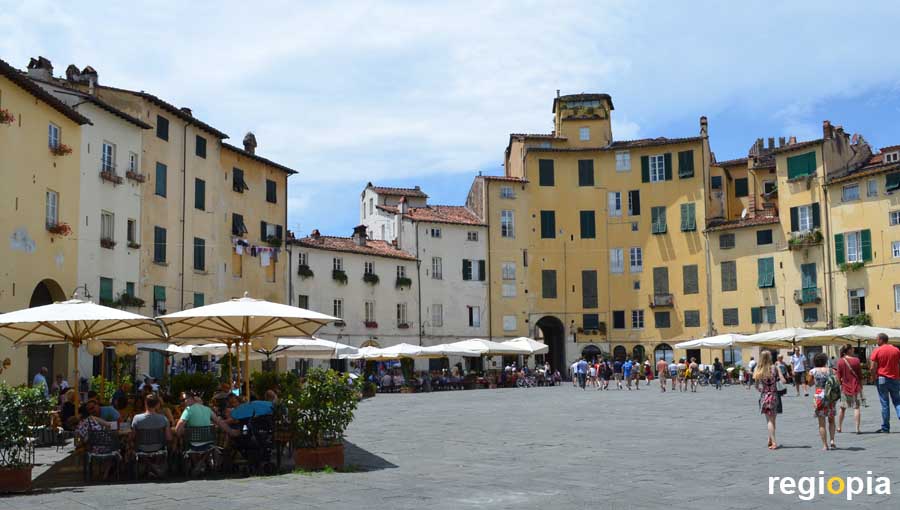
Lucca
The city of Lucca has around 90,000 inhabitants and is located on the northern edge of Tuscany. The green mountains of the Apennines tower into the sky just behind the city. Lucca is a very beautiful city with a few sights. The Piazza dell'Anfiteatro is a particular urban development feature. Here was the Roman amphitheater, which fell into disrepair after the fall of the Roman Empire and served as a quarry. The outer walls were partially preserved and were used as walls for the houses built into the theater. The space in the middle remained free and was used as a marketplace. This created an oval square, which is surrounded by houses of different heights.
Another special feature of Lucca is the Torre Guinigi. The 44 m high gender tower has a garden with trees on top. These trees did not grow because the tower was neglected, but were planted as a symbol of rebirth in the 15th century. The Guinigi Tower is the only gender tower of Lucca that has been preserved. Today it is a tourist attraction with a viewing platform. The entrance is at 45 Via Sant 'Andrea.
The Lucca Cathedral is the most beautiful building in the town. San Martino was built in the 11th century in the Romanesque style. The cathedral's campanile was started as a defense tower and was the first part of the cathedral in 1060. The white marble dwarf galleries on the west facade were completed in 1204.
The city wall of Lucca, built in 1645, is also worth seeing. It is still completely preserved and encloses the entire historical center. Another attraction is the Palazzo Pfanner with its baroque garden in Via degli Asili 33.
Lucca is located about 15 kilometers north of Pisa and about 60 km west of Florence.
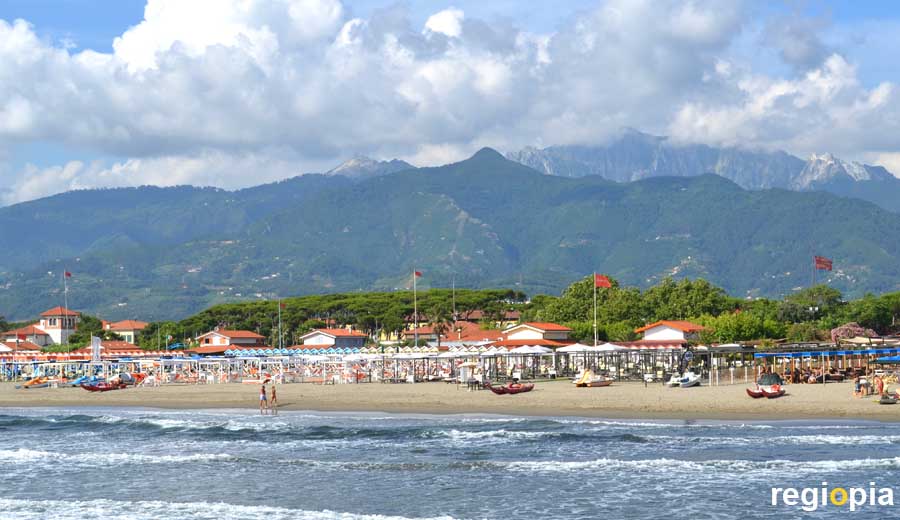
Forte dei Marmi
The posh Forte dei Marmi lido is located between Pisa and Carrara. The seaside resort is characterized by private beaches, expensive villas and luxury shops. The prices are correspondingly high. From the pier you have a beautiful view over the sea to the marble mountains of Carrara. The place was created as a port for the shipping of the marble. In 1788 the Fortino was built to protect the expensive stone. Forte dei Marmi is located roughly in the middle of the 45 kilometer long sandy beach that stretches between La Spezia in the north and Livorno in the south.
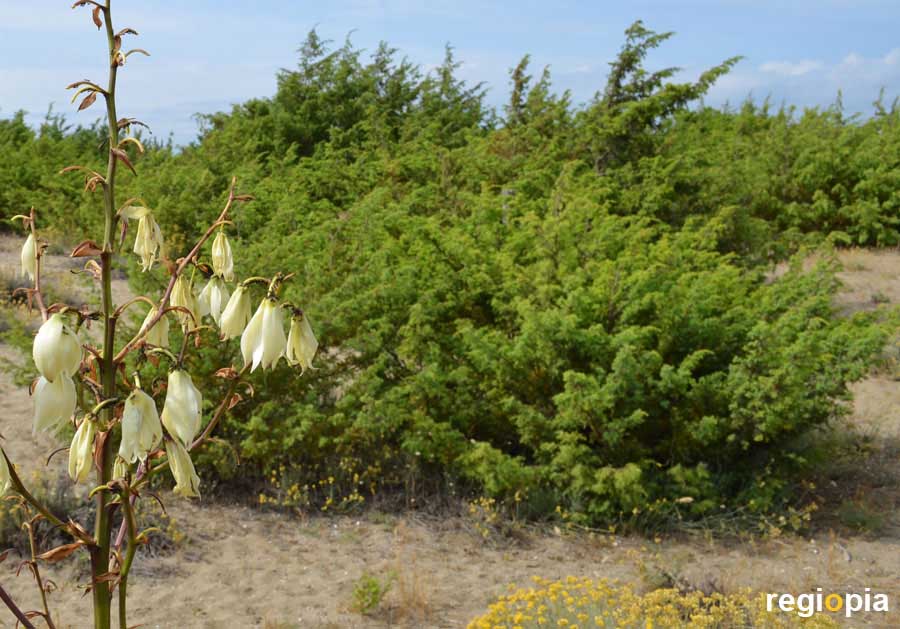
Parco Naturale Migliarino
It is difficult for anyone looking for a natural beach in Italy. In Pisa, near Migliarino, there is a nature park that borders directly on the sea. From the parking lot you walk through a beautiful dune landscape to the beach. The wide sandy beach is not managed, you can just lie down, there is still plenty of space here. Behind the dunes overgrown with tall grass, you can see the mountains in the background.
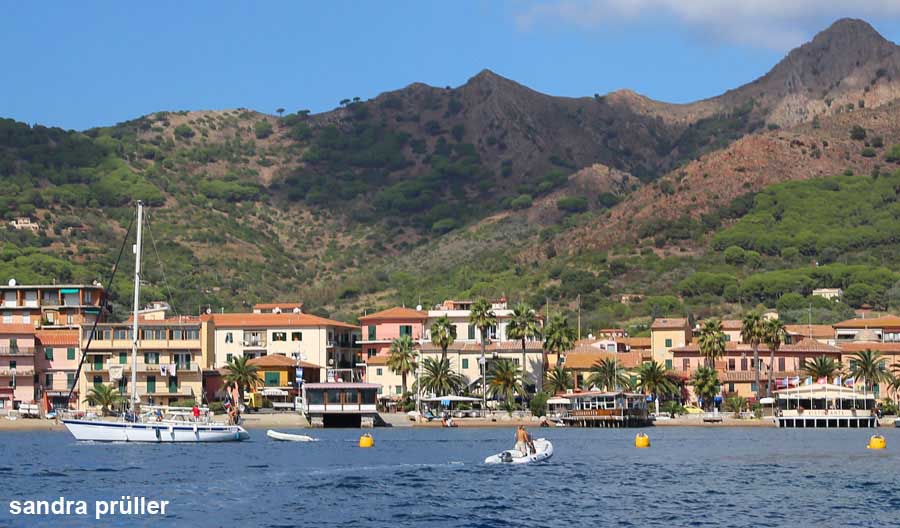
Elba
The island of Elba is just a few kilometers off the coast of Tuscany. The ferry from Piombino takes about 40 minutes for the 15 km long crossing to Portoferraio on Elba. The island was made famous by Napoleon, who spent his time here in exile from 1814-1815. Napoleon fled the island and went back to France to get defeated in Waterloo that same year. Elba offers over 145 km of coastline with many small bays. The largest town on the island is Portoferraio, where almost half of the 30,000 inhabitants of Elba live. The most famous attraction of Elba is the Villa Mulini in Portoferraio, here the little Corsican spend his time on the island.
How to get there
The ferries from Toremar (Link) connect Elba with the mainland.
Map Tuskany
Ads
Travel Guide Tuskany
Ads
Ads


